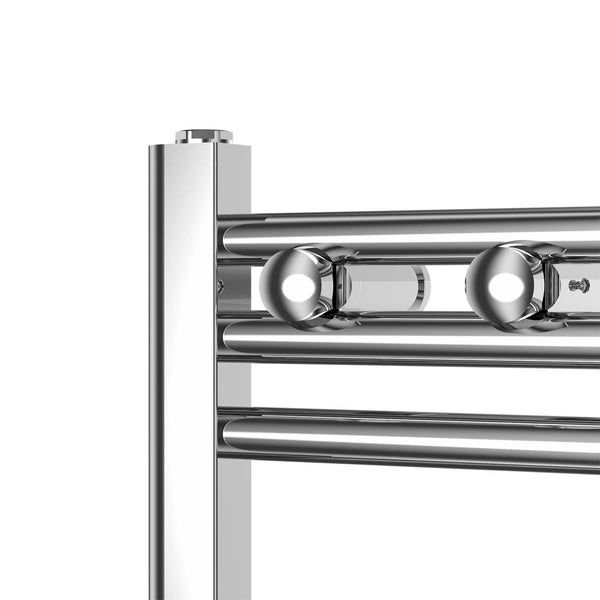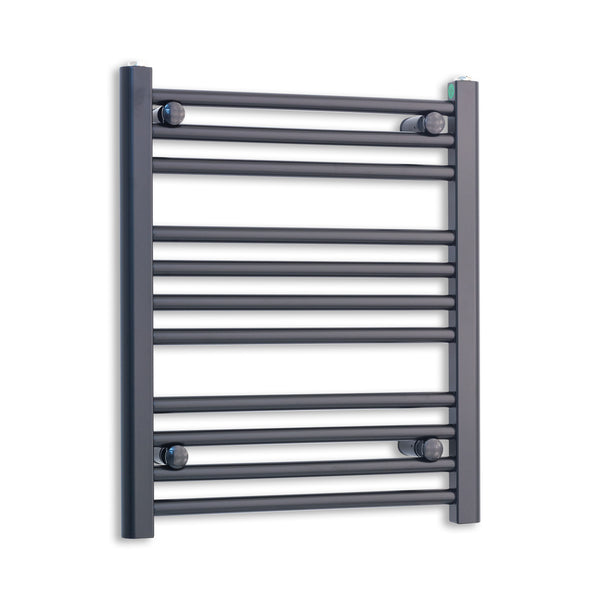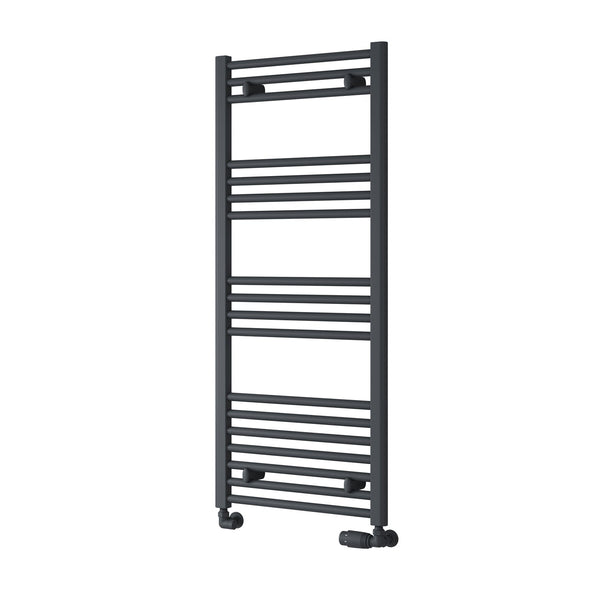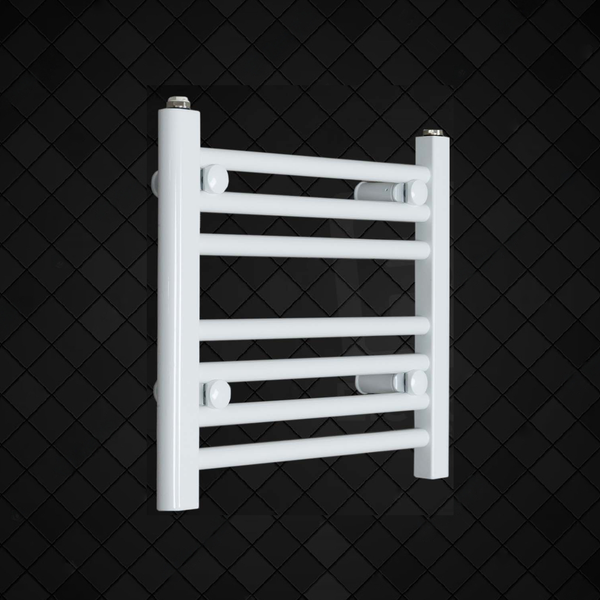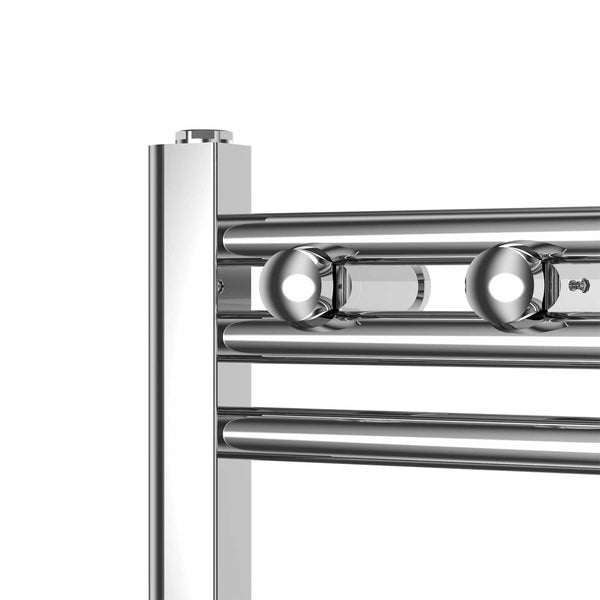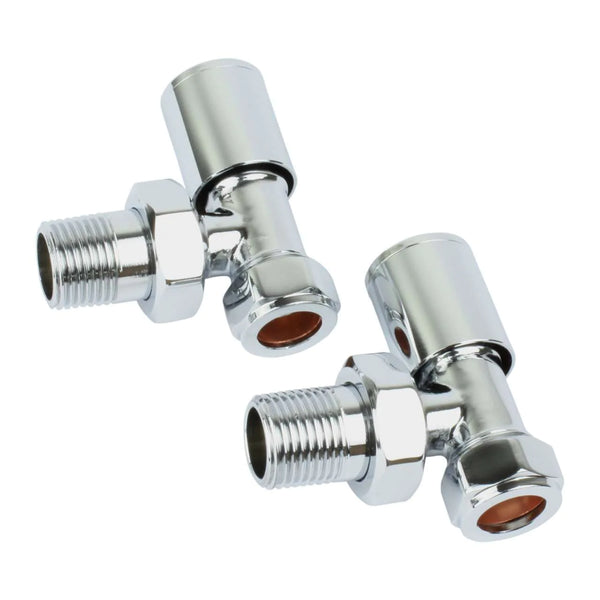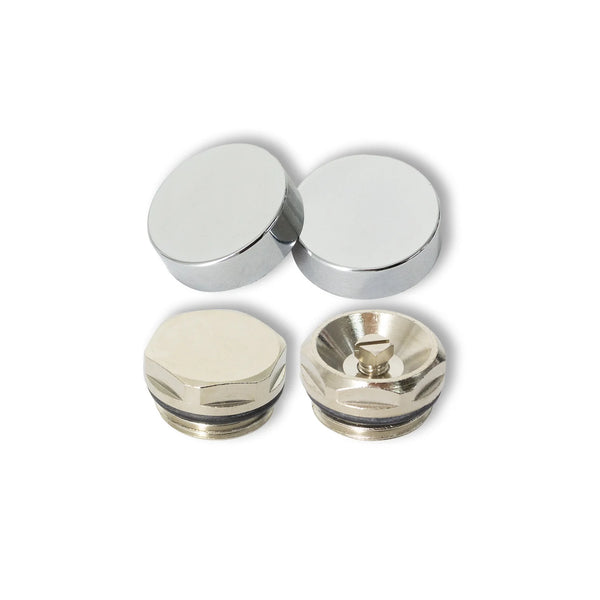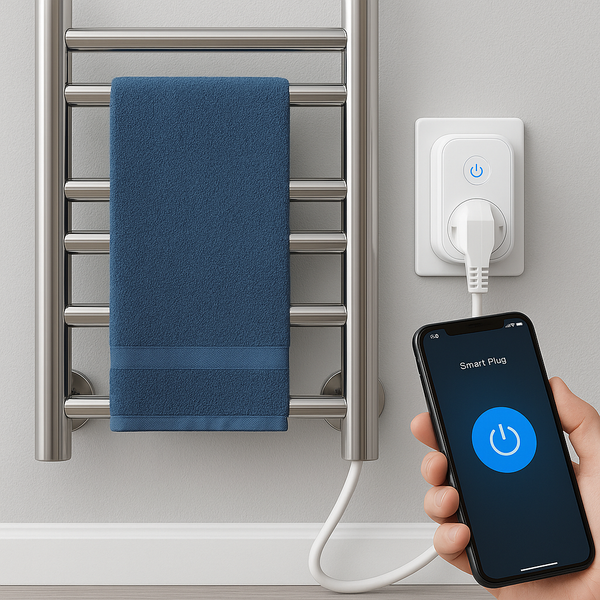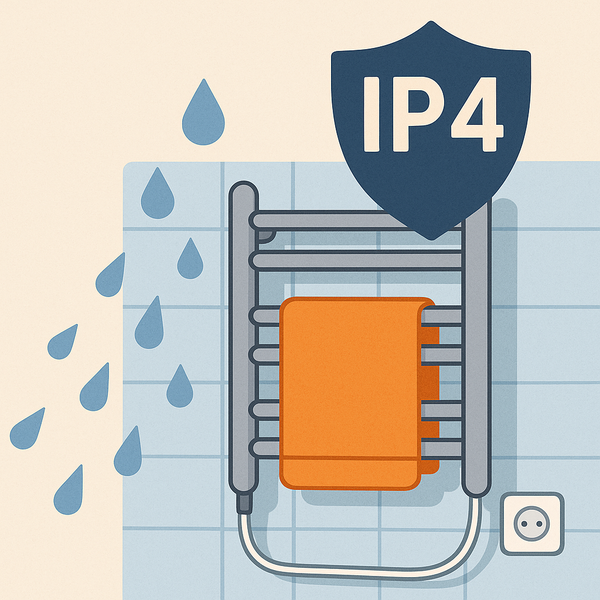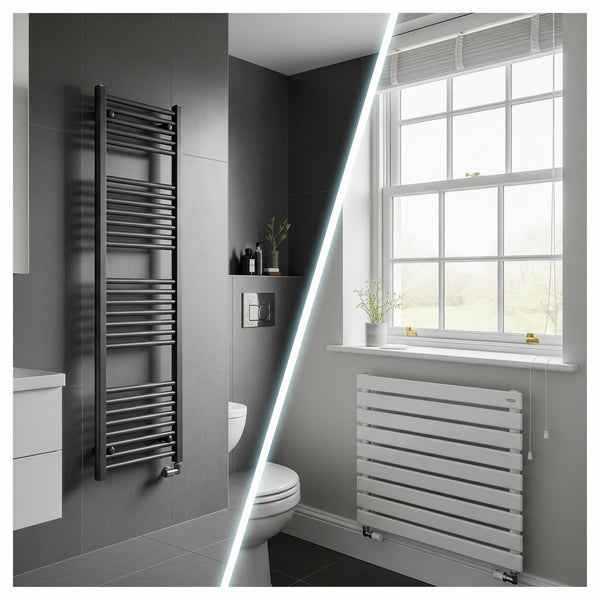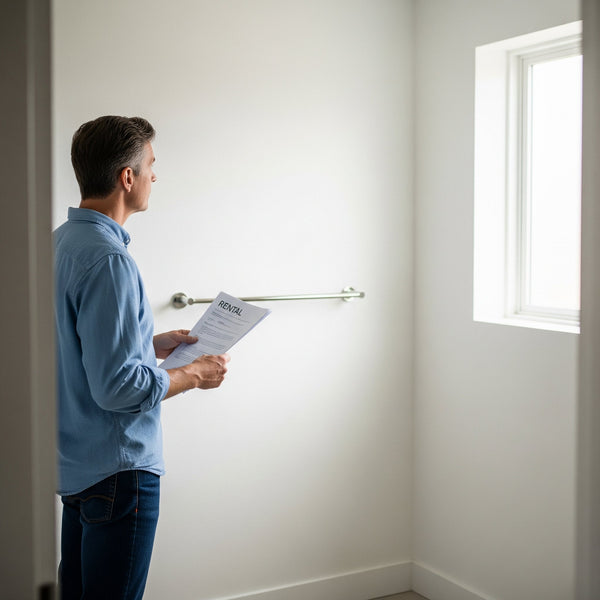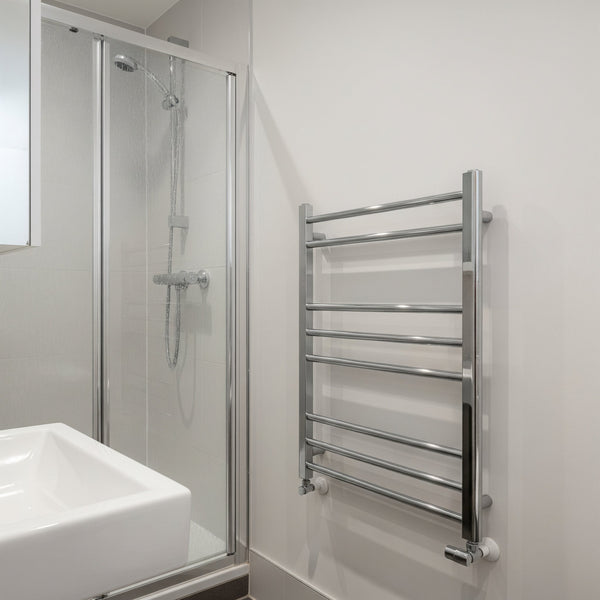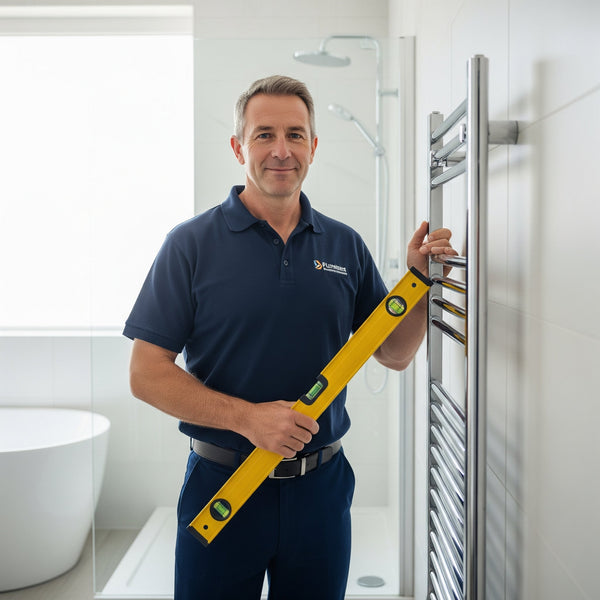How to Prevent and Clean Rust; Limescale on Chrome and Painted Towel Rails
A sparkling, pristine heated towel rail is a centrepiece in any modern bathroom. Whether you've chosen a gleaming chrome finish or a chic painted model in anthracite or white, keeping it looking as good as the day it was installed is key. However, the warm, steamy environment of a bathroom is a perfect breeding ground for two notorious enemies of metal fixtures: rust and limescale.
The good news is that with a little bit of knowledge and a simple maintenance routine, you can easily combat both. This expert guide from Company Blue will show you the best methods for both preventing and cleaning rust and limescale, with specific, safe advice for different finishes. Let's keep your towel rail looking flawless for years to come.

Part 1: Prevention – The Best Cure for a Beautiful Finish
Stopping rust and limescale before they start is far easier than removing them later. A few simple habits can make all the difference.
1. Keep it Dry
Rust (iron oxide) forms when iron, oxygen, and water meet. While your towel rail's finish is designed to be a barrier, any tiny scratch or imperfection can expose the metal underneath.
The Habit: After your shower or bath, get into the routine of giving your towel rail a quick wipe-down with a dry, soft cloth (microfibre is perfect). This removes the standing water and moisture that accelerates corrosion.
2. Ensure Good Ventilation
A constantly damp and humid bathroom is tough on all fixtures.
The Habit: Always use your extractor fan during and for at least 15-20 minutes after showering. If you don't have a fan, open a window slightly. Reducing the overall humidity in the room is one of the most effective preventative steps you can take.
3. Protect From the Inside Out (Internal Rust)
Rust can also form on the inside of a central heating towel rail. Over time, this creates a black, metallic sludge (magnetite) that can cause blockages and damage your entire system.
The Habit: Ensure your central heating system has the correct level of corrosion inhibitor. This is a chemical liquid added to the system's water that protects all the metal components from the inside. A plumber should add this after any new installation or system drain-down.
4. Tackle Hard Water (Limescale Prevention)
Limescale is the chalky white deposit of calcium and magnesium left behind when hard water evaporates. Much of the UK, especially the South and East, has very hard water.
The Habit: The same "keep it dry" principle applies here. Wiping the rail down prevents water spots from evaporating and leaving mineral deposits. For a whole-house solution, installing a water softener will remove these minerals at the source.
Part 2: Cleaning – How to Safely Remove Existing Blemishes
If rust or limescale have already made an appearance, don't worry. Here’s how to tackle them safely without damaging your towel rail's finish.
How to Clean CHROME Towel Rails
Chrome is tough, but it can be scratched by abrasive cleaners. Always use gentle methods.
To Remove Limescale:
- Create a 50/50 solution of white vinegar and water in a spray bottle.
- Spray the solution directly onto the limescale deposits and let it sit for 15-20 minutes. The mild acid in the vinegar will dissolve the minerals.
- Wipe away with a soft, damp cloth.
- For stubborn spots, you can use a soft-bristled toothbrush to gently scrub the area after it has soaked.
- Finish by buffing the chrome with a dry microfibre cloth to restore its brilliant shine.
To Remove Light Surface Rust:
- The Foil Trick: Tear off a piece of regular aluminium kitchen foil, crumple it into a ball, and dip it in water. Gently rub the foil over the rust spots. A chemical reaction between the aluminium and the rust (along with the water as a lubricant) will lift the blemishes without scratching the chrome underneath.
- For Tougher Spots: Use a dedicated, non-abrasive chrome polish and a soft cloth, following the product's instructions.
How to Clean PAINTED Towel Rails (Anthracite, Black, White, etc.)
Painted and powder-coated finishes are less resistant to chemicals and abrasion than chrome. Extreme care must be taken.
The Golden Rule: Never use harsh chemicals, abrasive scourers, acidic cleaners (like vinegar), or strong solvents on a painted finish, as they can strip the paint or cause it to fade and peel.
The Only Safe Method:
- The best and only recommended method is to use a soft microfibre cloth dampened with warm, soapy water (a few drops of mild washing-up liquid is perfect).
- Gently wipe down the surface to remove any grime, water spots, or build-up.
- Rinse the cloth with clean water and wipe the rail again to remove any soap residue.
- Finally, dry the surface completely with a separate, clean, and dry microfibre cloth.
If you have significant rust on a painted rail, it usually means the paint has been chipped or scratched. The best solution is to gently sand the specific spot, clean it, and then use a matching touch-up paint to reseal the area.
FAQ: Your Towel Rail Cleaning Questions
Here are answers to some common queries about keeping your towel rail looking its best.
Can I use bleach or strong bathroom cleaners on my towel rail?
No, you absolutely should not. Bleach and aggressive chemical cleaners are highly corrosive and will permanently damage both chrome plating and painted finishes, often causing irreversible discolouration or peeling. Stick to the gentle methods of soapy water or a vinegar solution.
What is the best type of cloth to use for cleaning?
A high-quality microfibre cloth is your best friend. Its fine fibres are excellent at trapping dirt and buffing surfaces to a streak-free shine without being abrasive. Always use a soft, clean cloth to avoid scratching the finish with trapped grit from previous cleaning jobs.
A spot of rust has appeared. Does this mean my towel rail is poor quality?
Not necessarily. Even on high-quality towel rails, tiny, microscopic pits or scratches can occur in the finish over time from general use or cleaning with the wrong materials. If moisture sits in these tiny imperfections, surface rust can form. It's usually superficial and can be removed with the methods above. Consistent preventative wiping is the best way to stop it from happening.
How often should I clean my towel rail?
A quick wipe-down with a dry cloth after every shower is the ideal preventative habit. For a more thorough clean to remove water spots or grime, once a week or once every two weeks is usually sufficient to keep it looking brand new.
Will cleaning the outside affect the inside of the rail?
No, the outside and inside are entirely separate. Cleaning the external surface will have no effect on the water or heating element inside. The only thing that protects the inside is having the correct dose of corrosion inhibitor fluid mixed into your central heating system's water.
